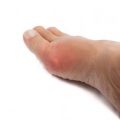Diabetes is a chronic disease that occurs either when the pancreas does not produce enough insulin or when the body cannot effectively use the insulin it produces. Insulin is a hormone that regulates blood sugar. Hyperglycaemia, or raised blood sugar, is a common effect of uncontrolled diabetes and over time leads to serious damage to many of the body’s systems, especially the nerves and blood vessels.
Diabetes makes your blood sugar level higher than normal. A high blood sugar level can damage your blood vessels and nerves. Damage to the blood vessels in your feet may mean that your feet get less blood. Damage to the nerves may cause you to lose some of the feeling (sensation) in your feet. According to the World Health Organization, diabetes was the direct cause of 1.5 million deaths last year.
Why should I worry about my feet?
According to the American Family Physician, people with diabetes often have foot problems. Part of the problem is that if you have any loss of feeling in your feet, it’s hard to tell if you have a blister or sore. Sores may take a long time to heal.
If foot sores aren’t taken care of, you might get a foot ulcer (a very serious, deep sore). If the ulcer then gets infected, you may need to go to the hospital for treatment or even have part of your foot amputated (removed). The good news is that with proper care, you can help prevent foot problems.
How should I care for my feet to avoid serious problems?
Careful control of your blood sugar is the key to avoiding foot problems. It may help to monitor (check) your blood sugar level every day at home (this is called blood glucose self-monitoring). Be sure to follow your doctor’s advice on diet, exercise and medicine. Here are some other things you can do to take care of your feet if you have diabetes:
- Check your feet daily. Call your doctor if you have redness, swelling, infection, prolonged pain, numbness or tingling in any part of a foot.
- Wash your feet every day with lukewarm (not hot) water and mild soap.
- Dry your feet well, especially between the toes. Use a soft towel and blot gently—don’t rub.
- Keep the skin of your feet smooth by applying a cream or lanolin lotion, especially on your heels.
- If you get a cut, scrape or blister on your foot, wash the area gently with soap and water.
- Don’t break a blister. Put antibiotic cream on the area several times a day. If the wound doesn’t heal in a few days, call your doctor.
- Cut your toenails straight across the top, not curved at the sides, to prevent ingrown toenails. Talk to your doctor if your toenails are too thick or if they crack when you try to cut them.
- If your feet sweat easily, keep them dry by dusting them with a non-medicated powder before putting on shoes and stockings.
- Loosen your blanket at the foot of the bed so it won’t press on your toes or heels, or on the bony spots of your feet.
- Have your doctor look at your feet at every office visit (at least one time every year) or whenever you notice anything that seems wrong.
What things should I avoid to care for my feet?
- Don’t use any instruments on your feet (except nail clippers) without your doctor’s advice.
- Don’t cut calluses or corns, or use medicine to remove them, unless your doctor tells you it’s okay.
- Don’t soak your feet.
- Don’t use hot water, a heating pad or a massager on your feet.
- Don’t go barefoot.
- Don’t use adhesive tape or chemicals on the skin of your feet.
- Don’t put inserts or pads in your shoes without your doctor’s advice.
- Don’t walk in wet shoes.
- Don’t place your feet on cold or hot surfaces.
- Don’t use any tobacco products—they affect blood flow in ways that are especially dangerous to people with diabetes.
What should I know about choosing shoes and socks?
- Don’t wear shoes without socks.
- Don’t wear sandals or other open-toed shoes.
- Don’t wear high-heeled shoes and shoes with pointed toes.
- Wear well-padded socks or stockings that are 1/2 inch longer than your longest toe.
- Don’t wear stretch socks, nylon socks, socks with an elastic band or garter at the top, or socks with inside seams.
- Don’t wear uncomfortable or tight shoes that rub or cut into your feet. If you’ve had problems before because of shoes that didn’t fit, you may want to be fitted for a custom-molded shoe.
- Shop for new shoes at the end of the day when your feet are a little swollen. If shoes are comfortable when your feet are swollen, they’ll probably be comfortable all day.
- Break in new shoes slowly by wearing them for no more than an hour a day for several days.
- Change socks and shoes every day. Have at least 2 pairs of shoes so you can switch pairs every day.
- Look inside your shoes every day for things like gravel or torn linings. These things could rub and cause blisters or sores on your feet.






